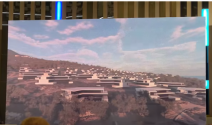Deputy Head of the Ministry of Industry and Trade in an interview with CNews: The introduction of robots in the automotive industry pays off in 9 months, in a metalworking enterprise - in 2 years
“The thesis that the introduction of industrial robots is expensive is no longer true”
CNews: Why is the level of implementation of industrial robots in Russia still low? After all, on the contrary, it should increase, given the growth in production and low unemployment in the country. What are our prospects here?
Mikhail Ivanov : Yes, the situation is really pushing our companies towards robotization. Thus, in the pharmaceutical industry or
, companies use industrial automation more actively, because it allows them to solve certain problems much more efficiently.
If we talk about the low level of robotization, firstly, I repeat that this is an expert assessment, and we will get the real picture only this year. By the way, the thesis that the introduction of industrial robots is expensive is no longer entirely true. Once upon a time, these were powerful and cumbersome projects in terms of timing and volume of investment: on average, a robotization project lasted 6–9 months. There are now many solutions that allow you to get to the stage of implementing a robot much faster.
CNews: Can you give an example?
Mikhail Ivanov
Another example is with the automation of welding processes in production. A small enterprise in one of the regions of the Russian Federation produces brackets for large buildings, and in the process uses standard welding operations.
The average salary of a welder in the region is 150 thousand rubles. cost of a robotic solution is 100 thousand rubles per month. Let me remind you that there are technologies that allow you to teach a robot to do certain operations, even if you are not
. Further: a welder works one shift, and a robot can work three - that’s already 450 thousand versus 100 thousand. The benefits of introducing
are obvious.
Additive technologies are actively used by the nuclear industry and the aviation industry”
CNews: According to the Higher School of Economics, the Russian market for additive technologies was expected to grow fourfold by 2024 (18.5 billion rubles), and by 2030 - 13 times (58.2 billion rubles). How close are we now to expected performance?
Mikhail Ivanov : Over the 9 months of last year, we doubled the production volume of 3D printing equipment compared to the entire 2022.
Today we have just over 60 companies operating in this industry, and 3D printers have now become part of the mass market. The principles of printing products have already become so simplified and become so universal that today even a schoolchild can work with a 3D printer. We have already mastered the segment of desktop 3D printers that print with plastic, and there are a number of companies whose products are available and compete with foreign analogues; this is a mass segment in which thousands of printers are produced. If we talk about the use of 3D printing in medicine, then they use installations that print with special alloys, and this is no longer layer-by-layer application of material, as in traditional plastic printing, but the fusion of metal powder under the influence of
. For example, last year the largest printer in Russia using direct laser growth technology was presented. Its essence is this:
powder is fed into the printer with an inert gas and melted by laser radiation.
a thin stream of melt in accordance with the established program, gradually grows the product in a chamber filled with argon.
Russian manufacturers today are able to make not only 3D printers, but also powders of various alloys. Moreover, a large number of our powders are certified for
industry, as are the installations on which the powders themselves are made. One of the technologies is called “centrifugal sputtering installation” - this is when a workpiece of the required alloy from which metal powder needs to be obtained is taken, it is installed in a machine and, thanks to the high rotation speed and the effect of an electron beam, the workpiece is scattered along the boundaries of the chamber into small particles. Then they are screened out depending on their dispersion, and we obtain different types of powder for different types of applications, including additive technologies.
CNews: So the entire technology stack is available in Russia today?
Mikhail Ivanov : Yes. Of course, there are tasks for the future, for example, the development of specialized software,
that are used to exchange information between machines at different technological stages. It must be said that in general there are not many breakthrough solutions, and here we are keeping pace with what is happening in the world.
Let me give you an example: during development work on the PD-35 engine, about 1000 parts were printed on .




